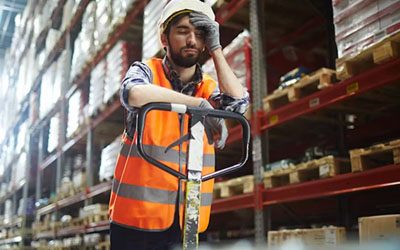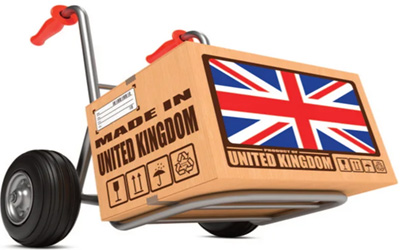The logistics landscape is on the cusp of trans-formative changes.
The logistics landscape is in a perpetual state of transformation, driven by technological advancements and a growing commitment to environmental sustainability. In this era of constant change, businesses must exhibit adaptability, embrace innovative technologies, and implement dynamic strategies to thrive and maintain their competitive edge. The logistics sector is on a trajectory of expansion, heralding increased agility and dependability. In the coming year, several key trends are poised to shape the industry’s future. Let’s delve into these trends to understand how they’ll impact logistics in 2023.
Supply Chain Agility: Meeting Dynamic Demands
2023 is set to usher in an era where supply chain agility takes center stage. As businesses grapple with surging demands for products and services, agility becomes their secret weapon. It enables swift responses to supply and demand fluctuations, cost reductions, and heightened efficiency – critical elements of remaining competitive in today’s ever-evolving marketplace.
Adapting to customer needs, global trends, and emerging technologies is vital for an organization’s success. Agility empowers organizations to make rapid decisions based on market trends and customer preferences. It ensures quick responses to unforeseen disruptions, efficient stock management, cost reduction, and profit maximization.
Flexible and collaborative strategies are paramount for achieving supply chain agility. Equally important is the proactive approach to risk management, involving contingency plans and supplier diversification. Investing in new technologies is key to staying agile in the logistics domain.
Automation: The Path Forward
 Automation has become ubiquitous in logistics and remains a dominant trend in 2023. With technological advancements and the surge in e-commerce, the industry is undergoing a significant transformation to offer top-tier services while cutting operational costs.
Automation has become ubiquitous in logistics and remains a dominant trend in 2023. With technological advancements and the surge in e-commerce, the industry is undergoing a significant transformation to offer top-tier services while cutting operational costs.
Automation’s most substantial advantage lies in replacing manual processes, a shift that dramatically reduces errors, enhances efficiency, and mitigates health risks.
One area where automation shines is in lifting and moving heavy loads, a historically hazardous task. Companies are increasingly investing in semi-automated lifting solutions, improving precision and speed while reducing the risk of injuries.
These technologies offer real-time visibility, enhance workplace safety, and, ultimately, reduce costs. While full automation may not suit all businesses, semi-automated processes provide a practical alternative to address manual material handling challenges.
Green Logistics: A Sustainable Business Imperative
Green, an Eco-conscious approach, encourages businesses to reduce their environmental footprint while enhancing operational efficiency. The focus is on lowering energy consumption, waste generation, and the use of hazardous materials, all while delivering customer satisfaction. To stay aligned with evolving trends, businesses must consider the principles of green logistics.
SARR take pride in our corporate social responsibility we believe in green solutions for a greener future contact us to receive a copy of our company profile which includes our green feature.
Optimizing transportation routes, an essential component of green logistics, relies on advanced transportation management systems that analyze traffic patterns, weather conditions, and cargo specifics. Shortening the distances that goods must travel decreases the carbon footprint of transportation. 
Shifting to alternative fuel vehicles like electric and hydrogen options also plays a pivotal role in reducing the industry’s environmental impact. Additionally, energy-efficient facilities, recycling, waste reduction initiatives, and sustainable packaging techniques contribute to a greener approach.
Education and engagement of all stakeholders, from shareholders to suppliers, customers, and employees, ensure a company’s commitment to green logistics and environmental preservation. It makes sustainability an integral part of the corporate culture by educating employees about the importance of environmental conservation.
Supply Chain Visibility: The Key to Streamlined Operations
Supply chain visibility, or the ability to trace goods from supplier to customer, is crucial for assessing supplier performance, ensuring product quality, and streamlining operations. It empowers businesses to track the movement of their products and materials, identify inefficiencies, and optimize supply chain procedures.
The benefits include a reduced risk of product recalls, lower production costs, and enhanced customer satisfaction. Real-time supply chain visibility is the future. It enables efficient route optimization and inventory management, allowing businesses to make informed decisions and anticipate customer demand.
Companies that harness this data to enhance their operations will thrive in the fiercely competitive market.
Labour Shortage: A Looming Challenge
 The industry’s continued growth faces a looming challenge: a labor shortage. The surge in demand for delivery and shipping services, coupled with a lack of skilled labor, equipment, and technology resources, has made it increasingly difficult for logistics companies to keep pace.
The industry’s continued growth faces a looming challenge: a labor shortage. The surge in demand for delivery and shipping services, coupled with a lack of skilled labor, equipment, and technology resources, has made it increasingly difficult for logistics companies to keep pace.
This shortage has led to delays, higher costs, and diminished efficiency. The shortage of skilled labor, particularly in logistics sectors driven by e-commerce, has intensified competition for qualified workers. This, in turn, has elevated labor costs.
To address this challenge, logistics organizations are turning to advanced technologies like vacuum lifting solutions, which offer a cost-effective way to handle large and heavy items without relying on manual labor.
By doing so, companies increase efficiency, save time and money, and maintain their productivity goals.
Conclusion
The logistics landscape in 2023 is on the cusp of trans-formative changes.
Automation, supply chain agility, green logistics, supply chain visibility, and labor shortage are the key drivers reshaping the industry.
Embracing new technologies and sustainability initiatives is critical for logistics companies to thrive in an increasingly competitive global market.
As these trends evolve, companies that integrate them into their operations will be poised for optimal productivity and success in the ever-changing world of logistics.








